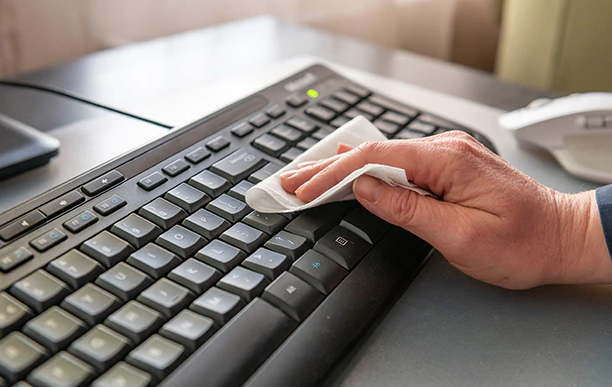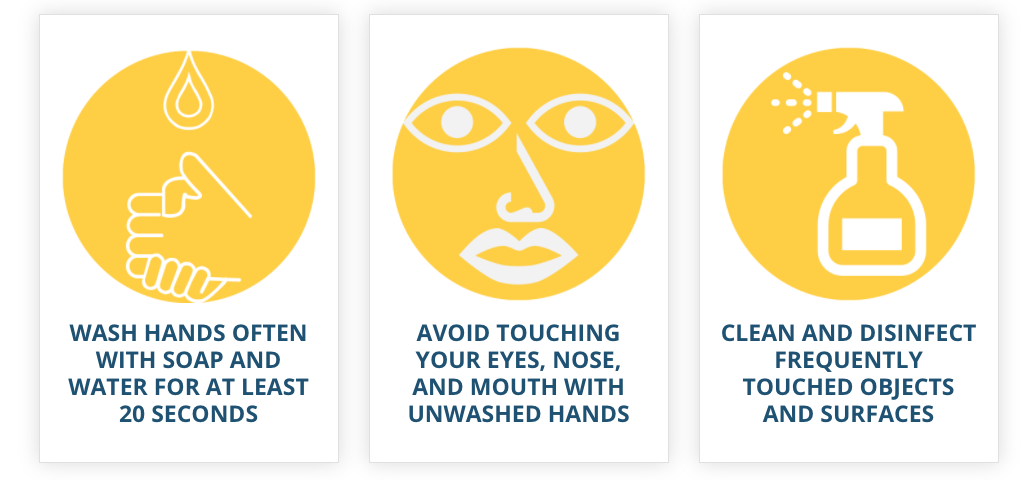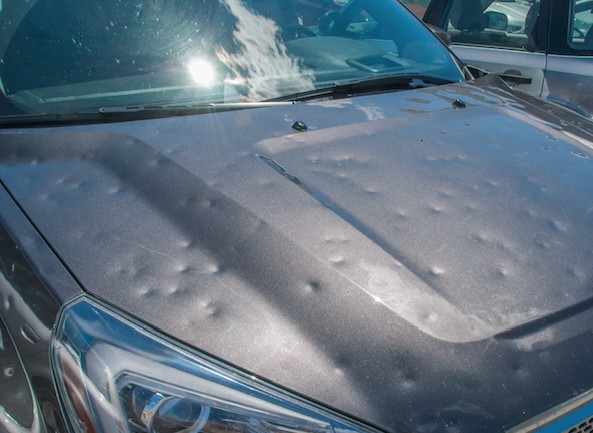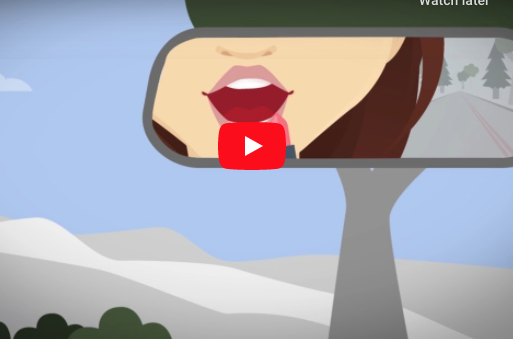Winter Flooding: Know Your Risk and How to Prepare and Respond
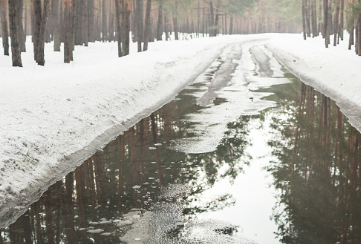
Kathy Simpson
When most people hear the word “flood,” they think of rivers overflowing their banks in the springtime and of tropical storms that thrash the Atlantic and Gulf coasts in late summer and early fall. But flooding is a year-round risk that doesn’t end when winter arrives. Across the country, winter is a season of heavy snowfall, rapid snowmelt and intense rainstorms that can lead to flooding — and put property and lives in peril.
The winter months of 2018 were a case in point when many areas of the country experienced unusually severe flooding.
The East Coast faced not one but two historic “bomb cyclones”— a catchphrase used to describe a strong low-pressure weather system that intensifies rapidly. The first storm pummeled the East Coast in early January, dropping snow from Georgia to New Brunswick, with Boston bearing the brunt of the impact in the Northeast. Seventeen inches of snow fell on the city, and a storm tide reaching over 15 feet flooded the downtown area, submerging roads with icy water and forcing some people to evacuate their homes. The second storm on March 2 also brought hurricane force winds as well as heavy rains to coastal New England, once again submerging Boston streets and those of nearby towns in floodwaters.
Also in January, torrential rain caused flooding in the west, including Southern California, which led to the death of at least 21 people, and coastal towns in Oregon and Washington. Unusually heavy rains inundated parts of Las Vegas and the surrounding valley, which until that point had been experiencing record drought.
In February, a combination of rainfall and rapid snowmelt in the Midwest brought many rivers from Chicago to Houston to flood stage. The Grand River in Grand Rapids, Mich. reached above 20 feet, more than two feet higher than flood stage. States of emergency were declared in 17 counties along the Ohio River due to high water and storm damage.
Causes of Winter Flooding
Winter flooding is a countrywide risk, but its cause depends on where in the country you live.
Along coastal areas, including the Great Lakes, storms bearing snow, heavy rains, and strong winds can cause water levels to rise, which can lead to flooding and beach erosion, especially when the storm’s arrival coincides with a high tide. The East Coast is particularly susceptible, where storm systems known as nor’easters — large, low-pressure areas whose winds come from the northeast — can lead to coastal flooding from the Mid-Atlantic states to the Northeast. Nor’easters occur every year, but climate models are showing an increase in extreme precipitation during the winter across the Northeast and a corresponding increase in the potential for flooding. Read More
Valuable Items Blanket Coverage: Lavish Gifts Deserve Protection as Special as They Are

The most valuable possession that you own is probably your home. It’s also one of the most vulnerable. Weather accidents, floods and property mishaps can easily damage it. But it’s not just the outside structure of your home that’s so valuable. Your contents and possessions inside it also require unique coverage.
Valuable Items Blanket Coverage protects your personal, valuable items by your basic homeowner’s policy. Valuable Items Blanket Coverage can add a layer of protection that can help protect items such as jewelry, electronics, dinnerware and more.
What is Insurance for your Valuables?
Most renters, condo, and homeowner insurance policies will cover personal property anywhere in the world. This can include items such as furniture, clothing, and appliances. But your basic policy may have some restrictions when it comes to valuable items that are stolen. Jewelry, furs, silverware, and firearms are covered for the named perils (such as fire, lightning, explosion, riot, vehicle or aircraft damage) in the policy up to the contents (Coverage C limit) except when it comes to theft. The basic policy only provides up to $1,500 theft coverage for jewelry, watches or furs, $2,500 for theft of firearms, and $2,500 for theft of silverware. In order to have more theft coverage, a different endorsement is needed. When you buy this extra coverage, you not only get more theft coverage, but you also get coverage for more causes of loss such as breakage or lost (mysterious disappearance). Read More
Do You Have Any of These 10 Home Fire Hazards Where You Live?

Emily Guy Birken
Most homeowners know the drill for reducing the risk of a house fire: They keep a smoke detector on each floor and make sure they are all in good working order at least twice a year. They closely monitor cooking, candles, and wood stoves and fireplaces, and refrain from smoking indoors. They keep matches and lighters stowed away where children cannot reach them.
Although all of these precautions are an excellent start for promoting fire safety at home, they don’t necessarily protect you from all of the fire hazards that could be lurking in your home. Here are 10 fire hazards you might not realize are in your home, and how to safely use, store, or dispose of each item to reduce the risk of fire.
1. Worn Electrical Cords
The electrical cords on any appliances that you frequently move—such as your vacuum cleaner or power tools, or even your laptop—can end up taking a great deal of abuse. Although power cords have no expiration date, they can wear out over time as they are used and abused.
For instance, the insulation around the power cord can wear away, either from the cord’s overheating or through misuse. If you’ve ever been guilty of pulling the vacuum cord out of the outlet by the cord itself rather than the plug, you may have weakened the insulation that surrounds the electrical cables. Similarly, electrical cords that run through high-traffic areas may lose their insulation as they are repeatedly trod on, and cords that get caught or pinched between heavy furniture can see the same kind of damage.
But cords that have lost their insulation can potentially electrocute you, not to mention the fact that they are a serious fire hazard.
How to Protect Your Home
If any appliances or extension cords in your home get hot to the touch or show signs of wear, do not use them. You can recycle worn extension cords at your local Best Buy, and you can find safe and environmentally friendly ways to dispose of old appliances through the EPA’s Responsible Appliance Disposal program.
You can prevent your cords for wearing out in the first place by keeping cords out of the path of any foot traffic, not forcing cords into spaces that may pinch or crimp them, and never using staples or nails to attach cords to a baseboard or wall. Read More
3 Tips for Prepping Your Boat for Winter

Now that autumn is upon us, it’s time to think about preparing your boat to brave the winter. By taking these steps, you can help ensure that your vessel will be ready for a new boating season next spring.
1. Think ahead. Winterize and be ready for next year.
Clean the boat thoroughly inside and out. Make sure all surfaces are dry. Inspect engine components. Spray cylinders with fogging oil to prevent corrosion. Top off the gas tank and change the oil. Flush the coolant system. Add antifreeze. This will help ensure your boat is ready when it’s time to get back on the water.
2. Choose the right storage facility.
Minimize the boat’s exposure to the elements. If feasible, remove the boat from the water. Place a tight fitting but vented cover or shrink wrap over the boat to keep out moisture. Store the boat on its trailer or another support system outside or in a covered or enclosed secure boat self-storage unit. Better yet, store it indoors on a dry rack or in a climate-controlled building. Read Full Story
Seven Habits That Science Says Increase Longevity

Sarita Harbour
As more people live well into their 90s and even surpass their 100th birthdays, scientists and researchers are studying just what they’re doing (and not doing) to live long lives.
Research shows that during the 30-year period from 1980 to 2010, the number of centenarians (people age 100 or older) grew by almost 66%, while the most recent U.S. Census report estimates that as of July 2015 there were 76,943 centenarians. The National Institutes of Health, or NIH, reports that people born in the U.S. today can expect to live to about the age of 79, a full 25 years longer than those born 100 years ago.
If you’re wondering what you can do to extend your life, but don’t like the idea of drastically changing your lifestyle and diet, you’re in luck. You can ease yourself into many of the lifestyle, diet and exercise habits of the world’s longest-living people—that is, if you aren’t already making these easy-to-live-with choices.
Take a look at these seven habits of people who enjoy long lives, and learn how to incorporate them into your daily life to boost the chances of increasing your longevity.
1. Drink (a Little) and Take Your Time With Meals.
National Geographic fellow and journalist Dan Buettner has carried out extensive research on the dietary and lifestyle choices in so-called “Blue Zones,”1 parts of the world identified by scientists as having unusually long-living inhabitants. The five Blue Zones currently include:
- Sardinia, Italy
- Okinawa, Japan
- Icaria (Ikaria), Greece
- Nicoya Peninsula, Costa Rica
- Loma Linda, California
Buettner’s research uncovered the fact that one of the noticeable traits of some Blue Zone inhabitants is that they enjoy life, including drinking wine—in moderation—and relaxing over long meals.
For example, the long-living residents of Sardinia and Ikaria enjoy small glasses of wine on a daily basis. They also take a long time to eat their main meal of the day, enjoying it with family and friends. Read Full Article
Seven Ways to Approach Retirement Challenges

Sally Abrahms
Shortly after he retired, my friend attended a cocktail party. He had been head of a high profile company in town. A guest who knew he looked familiar but couldn’t place him asked, “Didn’t you used to be somebody?” He laughed when he told me. “Does that mean I’m nobody now that I’ve hit retirement?”
For some, work defines them or how others see them. Interacting regularly in a job can provide friendships, a common goal, and a sense of identity. When that’s gone, there can be feelings of loss and soul-searching.
Does this sound familiar? You’re not alone. Approaching life as a retiree isn’t always easy so we’ve pulled together strategies to help you cope with common challenges in retirement.
Who am I now and what do I do?
Whether you can’t wait for the day you are gainfully unemployed or you are a surprise retiree, one thing is certain: Retirement is changing. Better medicine and health has led to greater longevity—on average, providing 20-30 extra years—than in the old days.
“Our research repeatedly shows that retirees are shocked at just how long retirement actually is. No longer is it a few short years of golf, beach walks, and bike rides. Today we are talking decades,” says Joseph Coughlin, director of the AgeLab at the Massachusetts Institute of Technology and author of The Longevity Economy.“Retirement is no longer simply about relaxing.” Many people are finding that, after a while, something is missing.
“People of all ages seek lives of meaning and purpose,” says Paul Irving, chairman of the Milken Institute Center for the Future of Aging. That’s never been truer than for older adults today who talk often about “leaving a legacy” and “making a difference.” Read Full Article
How to Cyberproof Your Smartphone

Nancy Mann Jackson
You may call it a “phone,” but that smart device in your pocket is actually a tiny computer. And that means it’s subject to the same security threats as your desktop or laptop. Any device that connects to the Internet is open to hackers, viruses and data breaches.
When your smartphone is hacked, your finances, private information and photographs, and even your personal safety can be at risk. For instance, some attackers may download financial information from your phone’s history, such as your use of Internet banking or mobile pay apps, and others may tap into your phone’s GPS to keep track of where you are.
Make sure your phone is secure by following these steps.
1. Use passwords and personal identification numbers (PINs).
If your phone is lost or stolen, you want to make sure that no unauthorized person can access its information. Use a PIN to activate your phone, and set different passwords for all of your important applications, such as email, banking and mobile wallet. Entering passwords all the time may seem laborious, but it will be worth the effort if your phone gets into the wrong hands.
2. Back up your data.
The documents, photographs and contacts stored on your phone are likely important to you—and if your phone becomes compromised or lost, you could lose them. Just as you would back up the data on your computer, you should perform backups to the data on your phone. You could back up your phone to a computer or external hard drive, or back up your data in the cloud.
3. Install only trusted apps.
When you download apps from a mobile app store, you are allowing the app provider access to your device. And although most are trustworthy, some apps carry viruses or malware that could attack your phone. Before you download an app, read reviews about it, make sure you’re using a legitimate app store for your phone, and make sure the app’s logo in the app store matches that on the app developer’s website. Read Full Article
The 70 Best Moving Tips

Johnna Kaplan
If you’re one of those people packing up your entire life and heading someplace new, you might be feeling overwhelmed at the thought of juggling all the moving pieces (pun intended) of relocating.
To make the process easier, The Extra Mile is compiling all our best moving tips, from packing tricks to handling long distance moves to settling into a new apartment. If you’re confused about timelines, tipping, or transporting your household across the country, this list will help you get organized and get moving.
Moving Tips and Tricks
1. Purchase all Your Moving Supplies Before you Start Packing
Unless you’re hiring full-service movers who will do everything for you, you’ll need:
- Boxes
- Sturdy tape
- Markers
- Packing materials such as newspaper, bubble wrap, tissue, or packing peanuts
- Optional: Saran Wrap
2. Stock up on Cardboard Boxes With Handles
These are much easier to lift. If you already have boxes without handles, it’s easy to make them yourself.
- Just draw two rectangles, about four inches long by two inches high, on opposite sides of each box.
- Cut out the rectangles with a box cutter, and voila – instant handles.
- Place your handles wherever feels most comfortable to you, but take care not to cut too close to the top of the box, as that will risk tearing the cardboard when you lift the box. Read Full Article
Can I Put My Car Insurance On Hold?

Yes, you can certainly put your insurance on hold but there are some important considerations when suspending the entire policy. Between maintenance, gas, and insurance, owning a vehicle can be expensive; the good news is that you don’t have to keep paying for something if you don’t need it. Is your vehicle going to be out-of-use for a period of time? Consider reducing the coverage on your vehicle.
In the below infographic, The Extra Mile introduces you to important information about suspending your auto insurance. Consider each element before jumping into the change. Read Full Article
A Step-by-Step Guide to Storing Your Car for the Winter
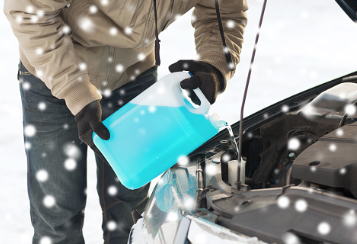
Whether you are traveling to a warmer climate for the winter or you own a convertible or classic car that you don’t drive in the cold, snow, and ice, proper storage can prevent an array of problems, some of which cost hundreds of dollars to fix. For example, a storage mistake could lead to blemishes or rust on your paint job, mechanical problems, or even rodents taking up residence in your tailpipe.
To prevent these problems, follow this step-by-step guide to storing your car for winter:
1. Make sure your car is insured.
It’s important to protect your car with standard car insurance or classic car insurance, even when it’s in storage. There are several reasons to avoid letting your policy lapse even when you’re not driving the car. First, a gap in coverage could cause your premium to increase once you’re ready to reinsure your car. Second, if something happens to your car while it’s in storage (e.g., a tree topples onto it), insurance can help cover the costs of repairs.
If you own the car outright, it’s a good idea to maintain your comprehensive coverage. As long as you don’t plan to drive your car, or allow others to drive it, you can drop your collision coverage. Note that if you have an auto loan, your lender might require you to carry both comprehensive and collision insurance at all times.
Depending on your insurer, you can update your address and make changes to your coverage online.
2. Decide where to store your car.
If possible, store your car in dry location with a concrete floor, such as your garage or an indoor storage unit. Many self-storage facilities offer indoor and/or outdoor vehicle storage options. You can safely store your car in the elements for several months if you cover it properly, says Lauren Fix, aka “The Car Coach,” a nationally recognized automotive expert. However, if you need to store your car for years, it definitely should be kept inside. Read Full Article











